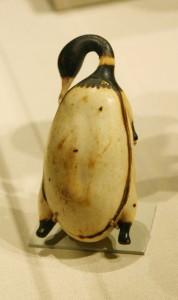 And there are lots of ways to do ‘synthesis’ of evidence within a systematic review. We’ve gone on – at length – about meta-analysis and described qualitative synthesis with meta-ethnography, but in a new paper in the Archives we see how a narrative combination of quantitative research studies with a qualitative framework to understand them can allow us to see where the trees lie in the wood [insert alternative forestry based metaphor if preferred].
And there are lots of ways to do ‘synthesis’ of evidence within a systematic review. We’ve gone on – at length – about meta-analysis and described qualitative synthesis with meta-ethnography, but in a new paper in the Archives we see how a narrative combination of quantitative research studies with a qualitative framework to understand them can allow us to see where the trees lie in the wood [insert alternative forestry based metaphor if preferred].
This group of authors decided to examine the safety netting tools after discharge from the paediatric emergency / urgent care department.
Taking a FAST approach, we can show that they have
F – found a lot of studies –
(As with many reviews where the ‘thing of interest’ is not a pharmacologically codable intervention, a very broad sweep with connected, spiderlike acquisition of information is most effective.)
A – assessed them using a risk of bias tool –
(While the risk of bias of randomised trials is well worked out – we have a whole series of posts on these elements and can be acronymed as RAMbo – there are greater difficulties in other areas, like diagnosis and prognosis. This paper used a version of a generic observational studies risk of bias score to given an overview of how reliable the answers might be.)
S – synthesised the information –
(This is the really interesting section. They visually grid the risk of bias against study number and ‘direction’ of answer for categories of particular question / sub-question.
What you can’t see is the ‘weight’ of each study – n=16 will be the same sized circle as n=673 – but this is meant to be impressionistic. It’s a feel for where it sits, rather than conclusive proof of anything.)
(And they do a nice textual job actually explaining it.)
T – talk about transferability / utility –
(What’s really clear is that lots of people have fiddled with this concept in lots of different ways and not fundamentally bashed out a strong basis for any approach, let alone any specific approach. Many things can be said and a citation found to underpin those statements. Whatever the truth is – if there is one – it’s not clear yet.)
Such a paper really helps us see where what we might suggest is founded on good intention not always good solid evidence.
– Archi
